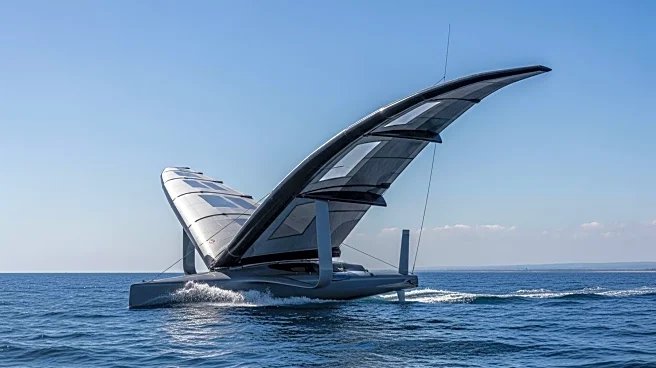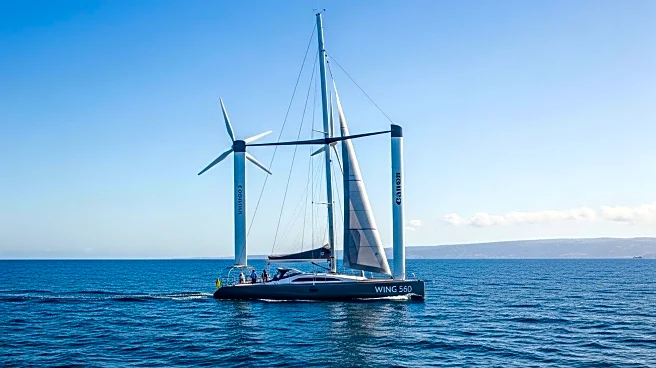Rapid Read • 8 min read
Oceanbird has unveiled its first prototype wing sail, marking a significant advancement in wind-assisted propulsion technology. The prototype, installed at the Orsesund DryDocks in Landskrona, Sweden, stands 40 meters tall and 14 meters wide. It features a high-strength steel core and an aerodynamic surface made from recycled materials. The sail, known as Wing 560, demonstrated its ability to unfold and rotate during the event. Oceanbird, a partnership between Wallenius Lines and Alfa Laval, aims to commercialize this technology by installing the first sail on a vessel in 2026. Extensive testing, including wind tunnel and model tests, has shown that a single wing can reduce fuel consumption and emissions by 10 percent, with potential reductions of up to 90 percent with full installation.
AD
The development of wind-assisted propulsion technology by Oceanbird represents a significant step towards reducing emissions in the maritime industry. As global shipping continues to face pressure to decarbonize, innovations like the Wing 560 offer a viable solution for reducing fuel consumption and emissions. This technology could lead to substantial environmental benefits, aligning with international efforts to combat climate change. The potential for up to 90 percent emission reductions highlights the transformative impact this technology could have on the industry, promoting sustainability and reducing reliance on fossil fuels.
Oceanbird plans to assemble a second wing sail this fall, which will be installed on the Wallenius Wilhelmsen vessel Tirranna in early 2026. The vessel, fitted with the foundation for the wing sail in July 2024, will undergo operational tests to evaluate the effectiveness of the technology. As interest in wind-assisted propulsion grows, more commercial vessels may adopt similar technologies, potentially leading to widespread changes in maritime operations. The success of these tests could encourage further investment and development in wind propulsion systems.
The introduction of wind-assisted propulsion technology by Oceanbird could have broader implications for the maritime industry, including shifts in engineering practices and sustainability standards. This innovation may drive new industry standards and regulations focused on reducing emissions, influencing global shipping policies. Additionally, the use of recycled materials in the sail's construction highlights a commitment to environmental sustainability, potentially inspiring similar practices across other industries.
AD
More Stories You Might Enjoy










